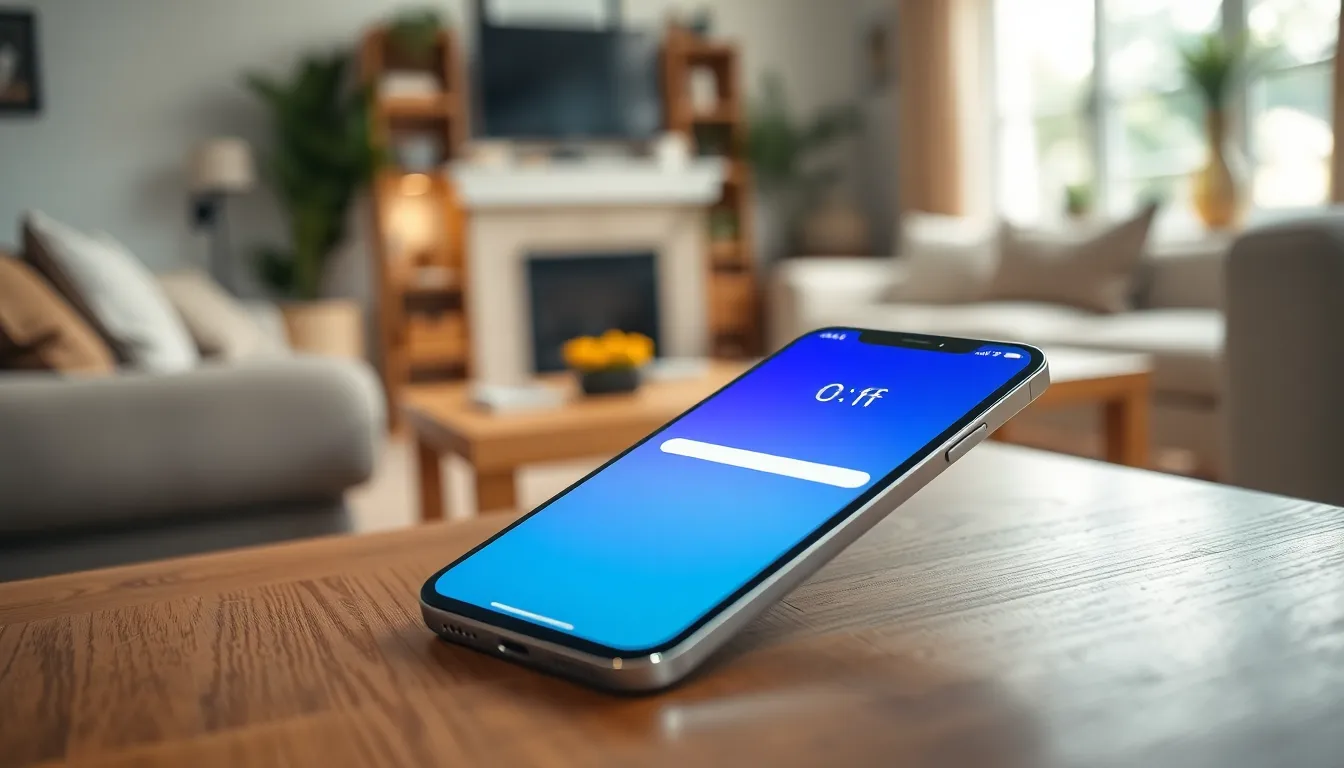Table of Contents
ToggleThere’s nothing quite like the frustration of your iPhone deciding it needs a break—right in the middle of your favorite playlist or that important video call. If your phone keeps restarting like it’s auditioning for a role in a tech-themed soap opera, you’re not alone. Many users find themselves scratching their heads, wondering why their trusty device suddenly acts like a rebellious teenager.
From pesky software glitches to hardware hiccups, the reasons behind those unexpected reboots can range from the mildly annoying to the downright perplexing. But don’t worry, it’s not the end of the world—or your iPhone. Dive into this guide to uncover the mysteries of your phone’s spontaneous restarts and learn how to tame the tech gremlins lurking in your device.
Common Reasons for iPhone Restarting
Many iPhone users experience unexpected restarts. Understanding the common causes helps in troubleshooting effectively.
Software Glitches
Software glitches frequently lead to random restarts. Corrupted updates and unsupported apps contribute greatly to these issues. Incompatible software versions create conflicts that disrupt normal operations. System bugs might also cause unexpected behavior, resulting in spontaneous reboots. Resetting settings often resolves minor software issues. Regularly updating software ensures optimal performance and reduces glitches.
Hardware Issues
Hardware issues often trigger unexpected restarts. Damaged batteries can cause performance inconsistencies. Faulty power buttons might unintentionally initiate restarts. Internal components, like the logic board, can malfunction without warning. Environmental factors, such as extreme temperatures, also affect device stability. Users experiencing persistent hardware problems should consult a professional for evaluation. Replacing damaged components restores device functionality.
Troubleshooting Steps

Addressing the issue of an iPhone that keeps restarting involves several steps. He or she can follow the guidelines below to help identify and resolve the problem effectively.
Restart Your iPhone
Restarting the iPhone can often resolve temporary software glitches. Users can perform this by holding down the side button along with the volume button until the power off slider appears. After sliding to power off, waiting for at least 30 seconds before turning it back on helps clear memory and refresh the system. This simple action frequently resolves minor issues, including random restarts.
Update iOS
Keeping iOS updated is crucial for optimal performance and stability. He or she should navigate to Settings, select General, and tap on Software Update to check for the latest version. Downloading and installing updates often includes bug fixes that address known issues with the operating system. Regularly updating provides enhancements that can prevent unexpected shutdowns and restarts.
Reset All Settings
Resetting all settings provides a fresh start without deleting personal data. By going to Settings, selecting General, and then Reset, users can choose Reset All Settings. This action restores default settings for network, privacy, and location, which can often eliminate conflicts that lead to restarts. It’s important to note that while personal data remains intact, users must re-enter Wi-Fi passwords and adjust settings afterward.
When to Seek Professional Help
Experiencing repeated restarts on an iPhone can indicate a more serious issue, especially if troubleshooting steps didn’t resolve it. It’s essential to understand when to turn to professionals for assistance.
Apple Support Options
Contacting Apple Support provides various resources for users. They offer chat and phone options that guide individuals through advanced troubleshooting processes. Users can schedule a call or visit the Apple website to access support articles and forums. These platforms deliver information about known issues and potential fixes based on specific iPhone models. Getting advice directly from Apple can help clarify any doubts and might lead to a swift resolution. Their thorough understanding of common problems ensures users receive tailored assistance.
Authorized Repair Centers
Choosing authorized repair centers ensures professional handling of hardware issues. Technicians at these locations are trained to diagnose and repair iPhones using genuine parts. Users may find these centers through Apple’s website or the Apple Support app. High-quality service at authorized centers comes with warranties on repairs, providing peace of mind. If the device has persistent issues, these experts can determine if hardware replacements are necessary. Trusting authorized technicians allows users to address technical problems effectively while maintaining device integrity.
Preventive Measures
Taking proactive steps can significantly reduce the likelihood of an iPhone unexpectedly restarting. Users can adopt various strategies to maintain performance and enhance device reliability.
Keeping Software Updated
Ensuring that the iPhone’s software remains current is crucial. Regular updates often include bug fixes and improvements that address existing issues. Users should enable automatic updates to streamline the process, minimizing manual intervention. Checking for updates periodically can also help catch any missed releases. Installing these updates promptly protects against glitches that may contribute to unplanned restarts.
Regular Storage Management
Managing storage efficiently enhances device functionality and can prevent restarts. Users should periodically review available storage space and remove unnecessary apps, files, and media. Offloading unused applications helps free up resources that the system requires for optimal performance. Regularly clearing cache files can also improve speed and responsiveness. Monitoring and managing storage ensures the iPhone operates smoothly, reducing the risk of spontaneous reboots.
Experiencing unexpected restarts on an iPhone can be disruptive and concerning. By understanding the potential causes and implementing the suggested troubleshooting steps users can often resolve these issues effectively. Regularly updating software and managing storage are essential practices that enhance device performance.
If problems persist despite these efforts seeking professional assistance may be necessary to identify underlying hardware issues. Utilizing resources like Apple Support and authorized repair centers ensures that users receive expert help tailored to their specific concerns. Taking these proactive measures can significantly reduce the likelihood of future disruptions, allowing users to enjoy their iPhones without interruption.




